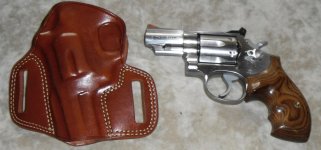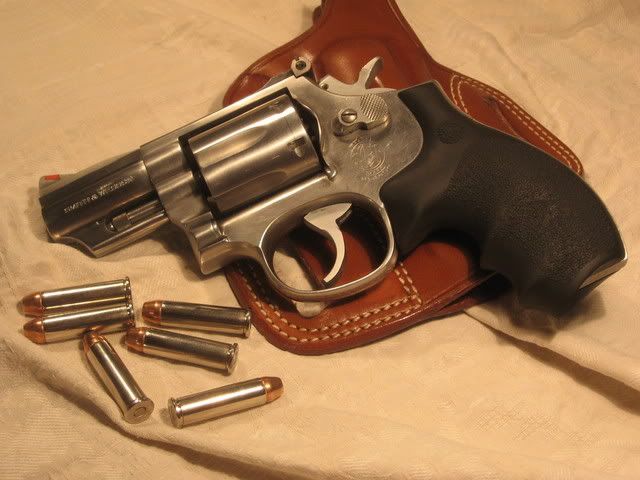The best explanation of the issue that I've ever come across can be found here:
http://www.gunblast.com/Butch_MagnumLoads.htm
Bear in mind that, when the Combat Magnum (Pre-M19) was introduced, 158gr bullets were about all that was available commercially in .357 Magnum. Nearly all the reports that I've ever heard of chronic issues with the K-Frame Magnums come from the 1970's or later, which also happens to be the period of time in which the lighter, faster 110-125gr loadings were introduced and became popular. What I believe was basically happening was that the K-Frame Magnums were experiencing problems because they were being shot with ammunition they were never designed for. When the ammunition for which the K-Frames were designed, 158gr loadings, is used the problems seems to be far less common (not that they're all that common in the first place).
Now, many people cite the introduction of the L-Frame as proof that the K-Frames weren't up to sustained Magnum use. However, one must stop and realize what changes were made to the L-Frame. Many of the internal parts between the K-Frame and L-Frame are actually the same including the hammer, trigger, rebound slide, locking bolt, and cylinder stop. The primary difference is that the L-Frame had its cylinder window made taller in order to accommodate a thicker forcing cone that did not need the K-Frame's characteristic "flat spot" and thus alleviate the issues endemic to that area with continued use of lightweight magnums.
Furthermore, the smaller and lighter J-Frames have been successfully chambered for .357 Magnum for years now. While the J-Frames are lighter, their forcing cones are full-thickness for 360 degrees and better supported by the frame than those of the K-Frames (or any other S&W revolvers for that matter). If the K-Frame were not strong enough for continuous use of
any .357 Magnum ammunition, I fail to understand how the smaller, lighter J-Frame could be (the light bullet issue notwithstanding).
So, in my estimation, a S&W 66 or any other K-Frame Magnum is plenty durable so long as you limit your use of .357 ammunition to that with bullets 140gr or heavier. My own personal M66-2 has digested almost exclusively .357 ammunition for about six years now. In that period of time, I would guess that I've probably shot, conservatively, a couple thousand rounds through the gun and it's still as tight as the day I bought it (it was purchased used). However, the .357 Magnum ammunition shot through my gun has been almost entirely factory 158gr loadings or equivalent handloads with 158gr LSWC bullets. I would estimate that, in the time I've owned it, my M66 has probably seen 100 rounds or less of lightweight magnums.




